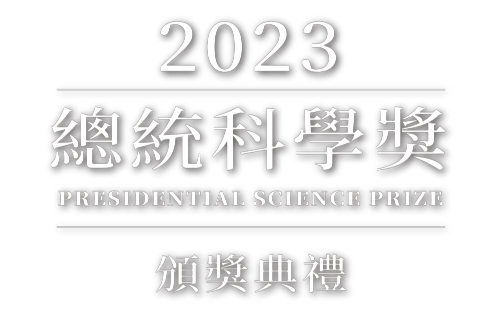PREVIOUS AWARDS
2017 AwardeesAcademician Dr. Chien-Te Chen
- Article Category: PREVIOUS AWARDS
- Post Date: 2023/08/30
Dr. Chien-Te Chen
Devoting to Scientific Experiments, Thriving in BreakingTechnological Limits
Physicist with Global Influence
Dr. Chien-Te Chen has been devoted to scientific experiments for his whole life. His craving for breaking technological limits and developing advanced instrumentation has never faded and this has been a blessing for the scientific communities in Taiwan and around the world. From inventing high resolution monochromators, conductingspectroscopy and condensed matter physics research, to leading the construction project of Taiwan's largest cutting-edge experimental facility, he has created much inspiration for the global and Taiwanese scientific communities over the past three decades.
Inventing the Dragon Beamline, Developing Soft X-ray Experimental Techniques
Dr. Chen joined Bell Labs in the USA in 1985 and soon invented the cylindrical-element monochromator design concept. Based on this concept, he constructed the world’s first high-resolution, high-transmission soft X-ray beamline, dubbed “Dragon” at the National Synchrotron Light Source (NSLS).
In 1987, the Dragon beamline was used to measure the K-shell photoabsorption of condensed N2 to demonstrate, for the first time, that the soft X-ray resolving power (E/ΔE) can be dramatically increased from 2,000, the world-record at that time, to 10,000, removing the fundamental impediment that had persisted for decades in soft X-ray science. The result stunned the international synchrotron radiation research community. From 1987-1995, Dr. Chen led his group to design and build photoabsorption, photoelectron, and magnetic circular dichroism (MCD) experimental stations, and by using the soft X-rays from the Dragon beamline, they developed many new soft X-ray spectroscopic techniques.
Leading New Directionin Magnetism and Magnetic Material Research, Injecting Momentum into Condensed Matter Physics
As the energy of soft X-ray covers the core-levels of those commonly found, and yet, important elements, the soft X-ray is a very powerful means to probe the electronic and magnetic structures of matter with element and oxidation-state specificities. Theexperimental techniquesdeveloped by Dr. Chen have now been widely utilized in the research fields of material physics and material chemistry. In particular, the first soft X-ray MCD experiment conducted in 1989 and the first experimental validation of the MCD sum-rules achieved in 1995 have ignited a worldwide upsurge in MCD research in the past three decades and opened a new research direction of magnetism and magnetic material research.
By using the above soft X-ray spectroscopic techniques, Dr. Chen and his collaborators investigated microscopic electronic and magnetic structures of many different condensed matter systems, and published over 100 papers in internationally renowned journals. Among these papers, those reporting high-accuracy measurements on HTSC, KxC60, CMR, and magnetic multilayer matters are the most influential ones. These experiments produced conclusive data on the electronic or magnetic structures of these advanced materials that settled major experimental controversies, helped test the validity of various theories, and provided a reliable microscopic foundation for new theoretical models yet to come. These publications have made critical contributions to condensed matter physics.
After returning to Taiwan in 1995, Dr. Chen built a world leading soft X-ray research group and experimental facility at the National Synchrotron Radiation Research Center (NSRRC) and, together with his collaborators, completed many decisive experiments that provided new insights into important issues of condensed matter physics. Dr. Chen also invented the active-grating-monochromator-active-grating-spectrometer (AGM-AGS) beamline design for inelastic soft X-ray scattering experiments, and an octuplesuperconducting magnet, which can produce a strong magnetic field in arbitrary 3D direction for large angle soft X-ray MCD scattering experiments.Both inventions have received international attentions and the magnet design has been adopted by many research institutes in the world.
Constructing Taiwan Synchrotron Light Source, Exceeding Advanced Countries
Urged by theSteeringBoard of the National Synchrotron Radiation Research Center (NSRRC), Dr. Chen left Bell Labs and joined the center. He devoted himself to the development of the facilities and scientific applications of the Taiwan Light Source (TLS), by taking the helm of the center's Deputy Director (1995-1997) and Director (1997-2005) to complete the missionbeyond expectation.The construction of the TLS synchrotron was consented by the Executive Yuan in 1983 and completed its first light emission in 1993. TLS synchrotron has an electron energy of 1.5 GeV and an orbit circumference of 120 m.
In order to enhance the research competitiveness of Taiwan, Dr. Chen initiated and prepared the "Taiwan Photon Source (TPS) Synchrotron Construction Plan" in 2004-2005. The project aims to place Taiwan among top advanced countries with ultra bright X-ray light sources in the world.
The TPS, having an electron energy of 3 GeV and a circumference of 518 m, can produce soft X-rays and hard X-rays a brilliance 100 times and 10,000 times stronger, respectively, than that of the TLS. From the ground breaking in February 2010 to having the first light emission in December 2014, Dr. Chen led the TPS team to complete the synchrotron within 5 years and to increase its current by a factor of 100 within 1 year. Until now, the TPS is the onlyone among the three most advanced 3GeV synchrotron light sources in the world constructed recently that reaches the maximal design target of 500 mA. The TPS was opened to users in scientific and technological communities in September 2016, laying a solid foundation for advanced experiments of a broad spectrum of research fields in the coming decades and elevating Taiwan’s international academic stature.





